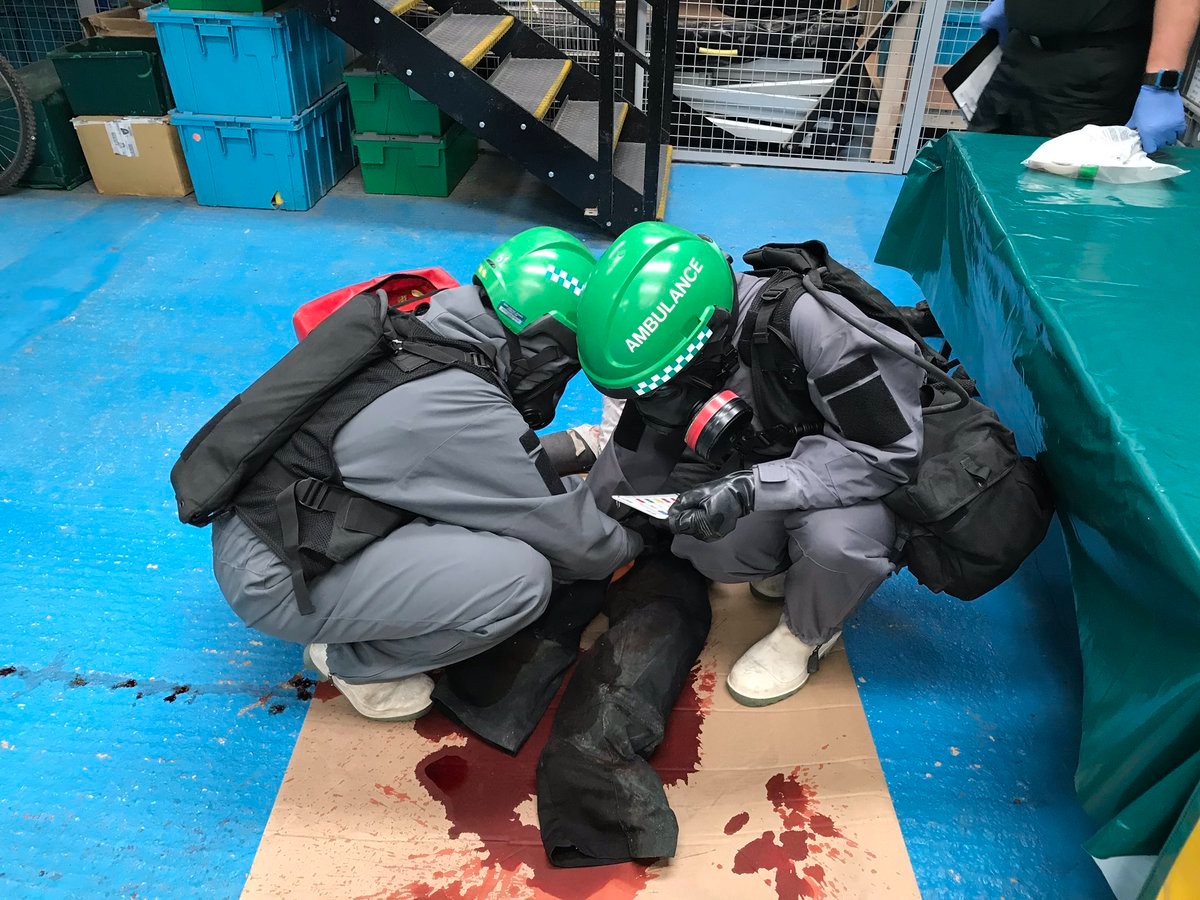Trauma Overview part 2
The Primary survey is a rapid and structured approach to assessing a patient for any immediate life-threatening deficits and should take no longer than 90 seconds to complete. To effectively manage a trauma patient, the primary survey can be used to quickly deal with immediate life-threatening deficits:
- Catastrophic Haemorrhage (C) – If the patient is rapidly losing a large volume of blood their condition will quickly deteriorate through a cascade of negative pathophysiological events: lack of oxygen and nutrient carrying/perfusion capability, increase in cell anaerobic activity causing acidosis, lack of ability to maintain organ perfusion and blood pressure, and overall negative/catastrophic impact to the body’s haemostatic balance. Blood loss can be difficult to replace within the pre-hospital setting.
- Airway with considerations for C-spine (A) – If the patient has lost their airway, Oxygen is unable to enter the lungs to help metabolise cellular activity and Carbon Dioxide cannot leave. This hypoxic and hypercapnia state quickly starts causing cellular disruption and death, affecting organ function and pH levels, and overall negative pathophysiology.
- Breathing (B) – Similar to Airway, with reduced or no respiratory effort from the patient, gaseous exchange is severely affected or unable to happen in the lungs, causing cellular disruption and death, affecting organ function and pH levels, and overall negative pathophysiology.
- Circulation (C) – If circulation is affected to a certain part or all the body either through medical and/or traumatic means, then perfusion of the cells/tissues/organs can be affected. Depending on the severity of the circulatory problem will affect the negative outcome on the normal state of the body.
- Disability (D) – Looking at the effects of a reduced level of consciousness and its’ cause, this may have increased detriment to the patient. For example, a gradual hypoglycaemic event will affect the patients’ level of consciousness and homeostatic level. As this worsens further issues may develop, such as the patient becoming unconscious and putting their Airway at risk.
- Expose/Environment/Evaluate/Evacuate (E) – The last assessment of the primary survey encompasses different elements of surrounding and situational circumstances. The clinician will need to consider and question a number of factors surrounding ‘E’ such as: Will exposing the patient through clothing removal reveal further injury, is the environment a factor to their ill health (such as Carbon Monoxide poisoning) or will it further adversely affect the patient (such as hypothermia), is there a need for further evaluation, and is it time to evacuate the patient to hospital.
